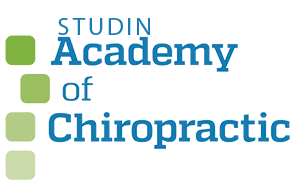Diagnosing Accurately
Click here to download the transcript.
Disclaimer: The following is an actual transcript. We do our best to make sure the transcript is as accurate as possible, however, it may contain spelling or grammatical errors. We suggest you watch the video while reading the transcript.
Hi, I’m Dr. Mark student. Welcome to the academy of chiropractic doctors, PI program consultations. I am very excited that you took the time to do this and make the commitment to your career, to your family, to yourself, just to be the best of the best of your clinical excellence. Sit back and enjoy the consultations.
Hi, I’m Dr. Mark student and welcome to the world of the academy of chiropractic. Diagnosing accurately is critical in healthcare and chiropractic is part of healthcare. So it’s no different. It’s something that’s very confusing to most doctors. How do I choose a diagnosis? Should I rely on a pain diagnosis? Well, this is a personal injury case. Don’t I need more diagnoses or it’s a non-personal injury case. Do I need less? The reality is it’s it’s, it’s awfully confusing out there. So there’s some rules that you have to consider. The first are what we call pain. Diagnoses pain diagnoses are often referred to as a throwaway diagnosis. You don’t really need to use, I mean, it’s not bad, but it’s not something you should rely on because by saying I have low back pain or lumbago, which is pretty much the same thing, or I have neck pain.
Well, yeah, you have pain, but what’s causing that pain. Is it a strain? Is it enthesopathy? Is it myositis? These are all different. Is it laxity of ligament? Is it a herniated disc? Now you’re looking at pathology versus a symptom. So you have to be very careful that you look at diagnosing pathology and not symptoms. And that matters also to carriers because when they look at the, when they look at their algorithms or computer programs, about how long they should be covering your care, well, diagnoses lend itself into it. Years ago, when they came out with diagnoses, they created relative weights. And for instance, a a low back pain might be a 0.6, where cancer might be a 1.5. So what they did was they put it numerically that a 1.5 will have longer stays in hospital, longer treatments than a 0.6. And it’s a very good algorithm, but they’ve got, gotten a lot more sophisticated now and they’ve classified.
And if you look at what Medicare has done in certain jurisdictions and other providers, they’ve classified the causality diagnosis, the sequela diagnosis, there’s the S at the very end, if you put an S at the end a is acute or, and S sequel of what persists. So if you look at diagnosing the cause and what’s causing that pain, you will be able to ensure that you’re telling a better picture about what’s going on with your patient. You will unlock more visits without being denied, and you’ll have a more accurate picture because your diagnosis has to tell the entire story, the entire story. So when you look at personal injury, too many gurus in our industry are telling you, oh, to beat, to beat the personal injury algorithms. And, and, and one of them is called Colossus. You need 20, 30, 40 diagnoses. Well, guess what?
They’re right. But there’s an asterisk behind that. If you’re diagnosing every single patient with that level of di, with that number of diagnoses, you’re gonna yourself in the short end of a Rico case, the carriers are gonna come after you because it looks like you’re pandering to the plaintiff’s attorney or to break the algorithm to make more money. And you know what? I kind of agree with them. You’ve gotta be really surgical and accurate and complete in your diagnoses. And I’m sure there is sometimes you’re gonna need 20 or 30 diagnoses and there, and, but the majority of the time, it’s not gonna be that the hick ACLA forms give you 12 spaces for diagnoses. I usually like to try to stay within that if I can. And if I can, I’ll use a supplemental page. So listen, this is very, very important to do it accurately and completely and understanding how it works.
Listen, if you want a sample diagnosis sheet, just gimme a jingle. It’ll be my pleasure to share it with you. It’s it’s just, it’s just what we do. Actually. Don’t gimme a jingle, shoot me an email to Dr. Market academy@chiropractic.com. Listen, on the coaching side, listen is part of what we teach our doctors and is part of the core of the success of our doctors, which average 15 new PI cases 15 cases a month, mostly PI, but their take home pay on average goes up 61% with within the first year. And in part it’s because it’s being diagnosed host accurately. Look, thank you for so much for letting me share the day with you. And I look forward to doing more in the future. Thanks have a good day.
I hope you enjoyed the podcast you just heard, and it’s been my pleasure to bring this to you. Please understand that this is a very small piece of the puzzle, and it is my goal to bring you many, many pieces of the puzzle so that the picture can become clearer. Your practice can thrive. Chiropractic can thrive, and I at least can be a small part of that. I it’s my pleasure. So again, if you want to chat, gimme a agenda. 6 3 1 7 8 6 4 2 5 3 that’s 6 3 1 7 8 6 4 2 3. Or go to our website and teach T E a C H chiros, C H I R os.com. Thank you so much. I look forward to seeing you or chatting with you on our next podcast. Have a great day.

